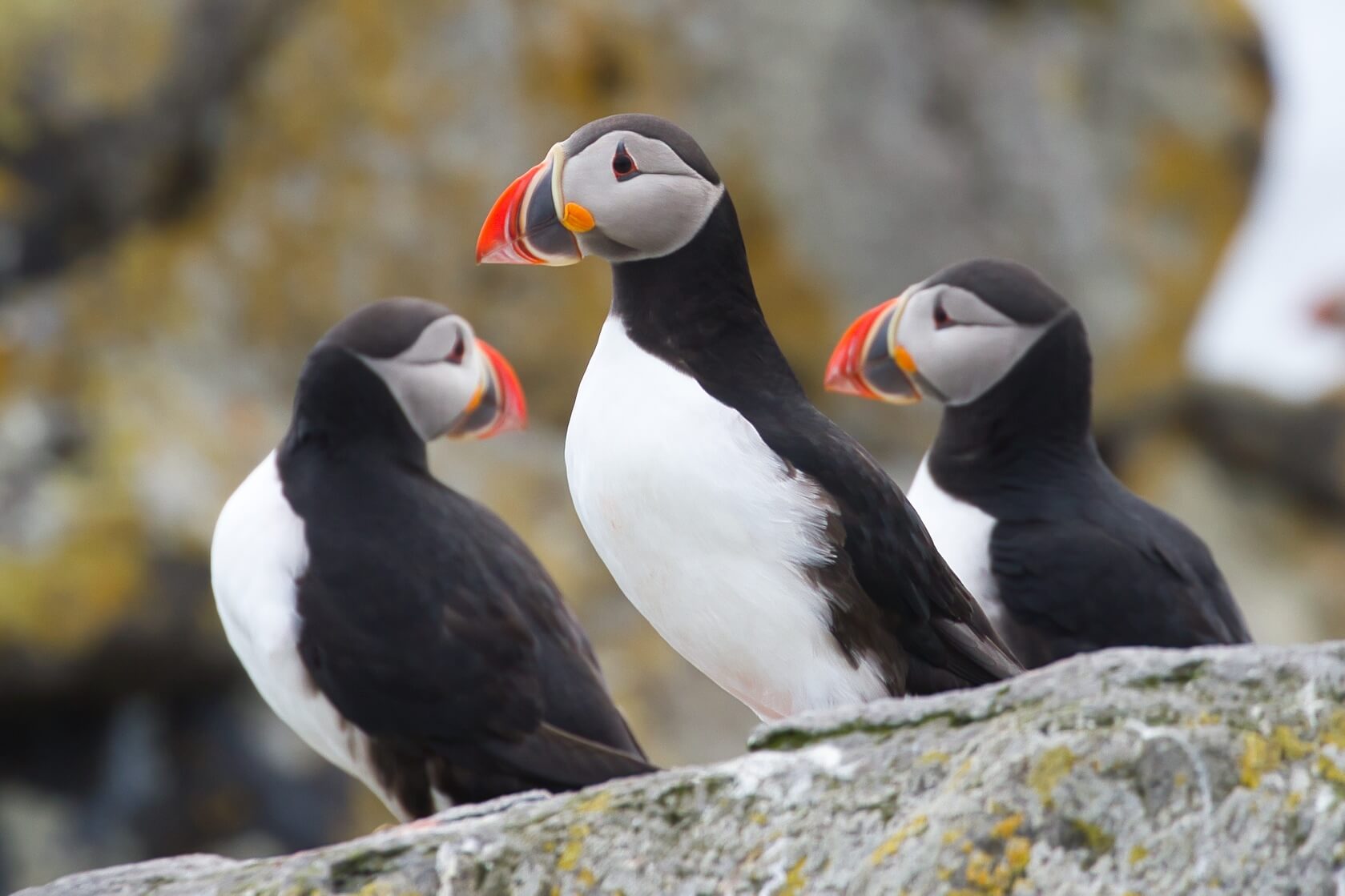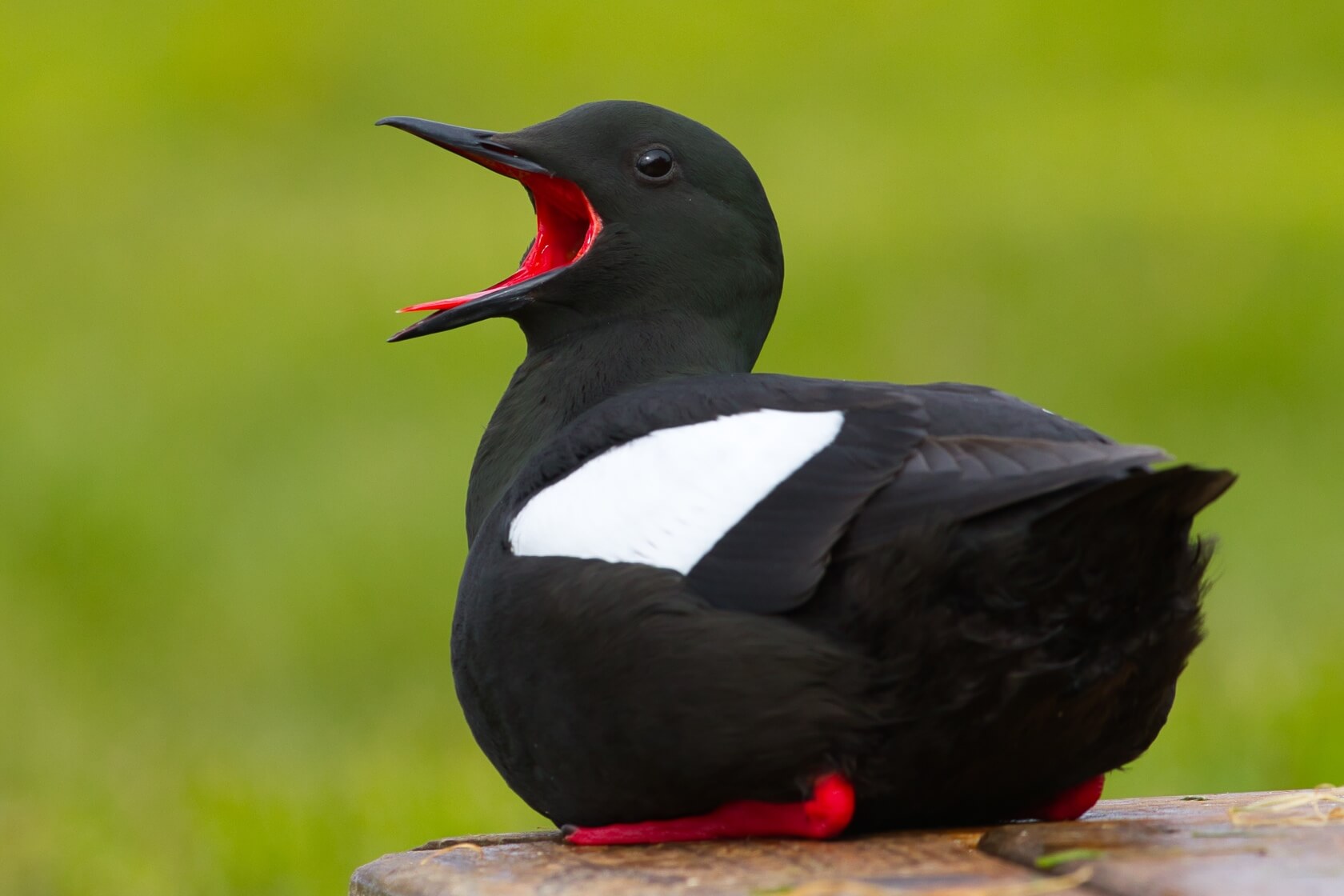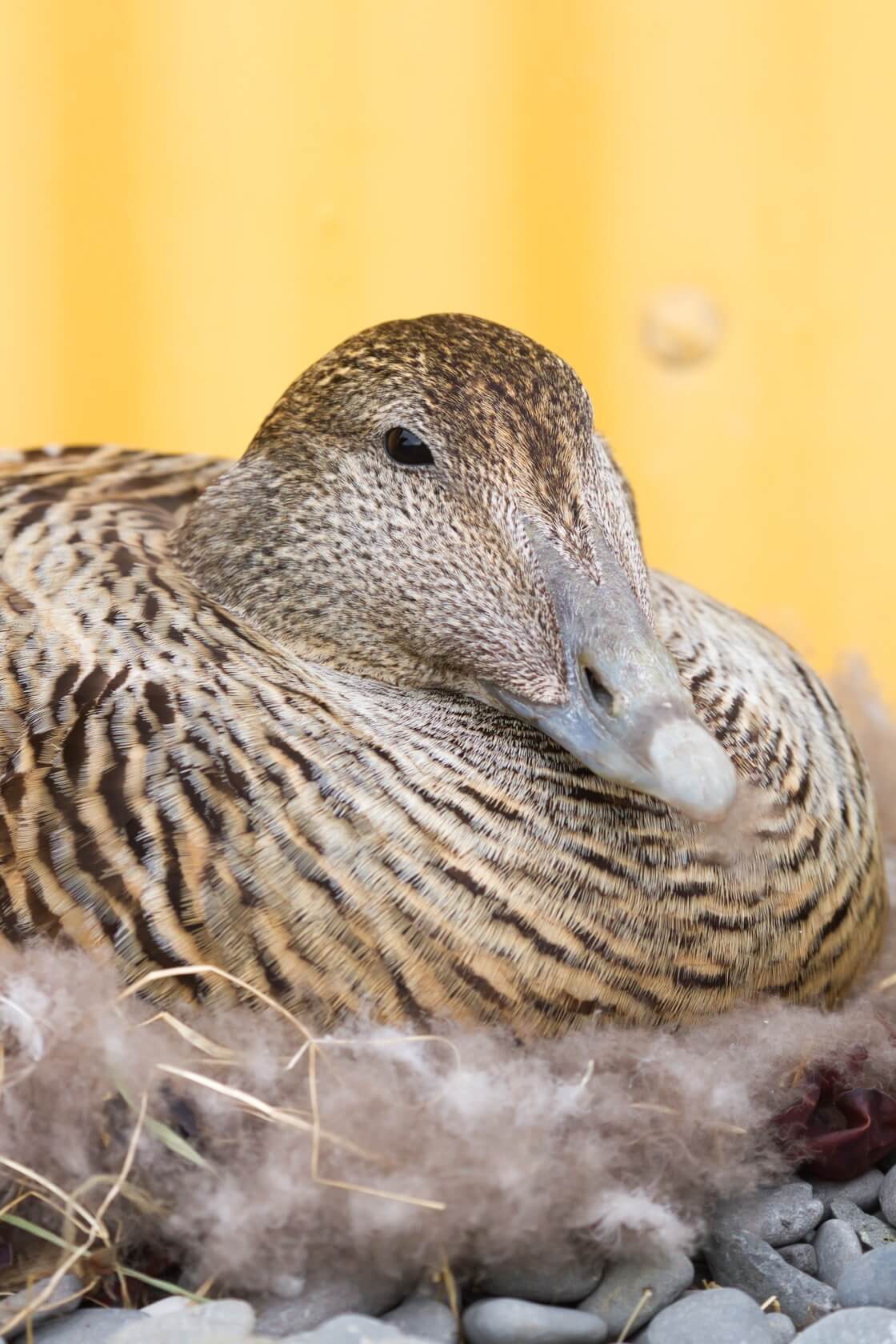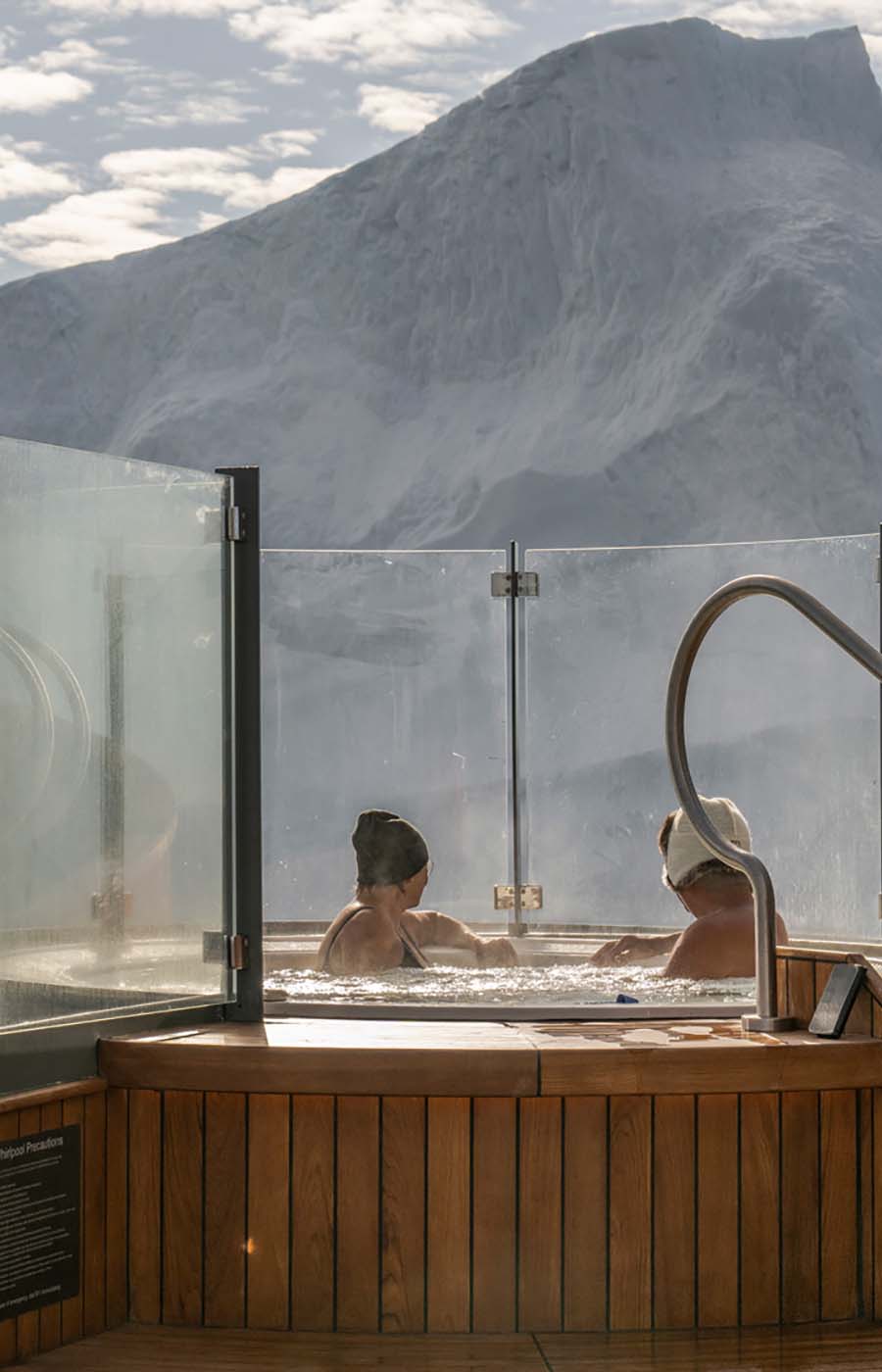From puffins to Eider ducks, birds are the word when it comes to exploring this idyllic isle.
Talk about a once-in-a-lifetime arrival: for some lucky guests, the first view out of the window as our ship arrived in Isafjordur was a humpback whale casually lunge-feeding close to the ship’s starboard side.
And, thrilling as it was, that was just one of many inspired sights. Before docking in town, the expedition team on Seabourn Quest lowered its fleet of Zodiacs for those who chose to embark on the Ventures by Seabourn excursion to Vigur Island.
Why Vigur? There is something inviting and charming about little islets, and the harmonious habitat for thousands of birds sets this one apart. Over the years, this destination has earned a great reputation among birdwatchers as a must-see. Eider ducks, Arctic terns, puffins, black guillemot and many more species make their homes here. And, the only windmill in Iceland is located on Vigur.
As the Zodiacs approached the island, Vigur’s importance as a seabird colony became apparent. Vast flocks of Puffins carpeted the sea in several sheltered bays, and many more whirred overhead, their stubby wings working desperately to keep them airborne. More than 70,000 of these colorful, charismatic birds nest on the island, and guests would later enjoy even better views of their antics outside their nesting burrows.
Nearing the landing stage, several curious Common Seals approached the Zodiac for a closer look, though always disappearing below the surface with a dramatic splash just moments before they could be photographed. Once ashore, our guides — summer residents of the islands along with just five permanent inhabitants (a farmer and his family) — greeted us.
A big surprise bonus was a sighting of two drake King Eider, a rare visitor from the high Arctic with even more striking plumage than their common counterparts. But despite this incredible sight, the stars were the Eider Ducks. Here, they nest close to the protection of the small settlement, safe from aerial predators such as gulls and skuas. After the females have completed their nesting activities and taken their ducklings to the sea, the soft, insulating Eider Down that lines the nest is abandoned to the elements.
Related Seabourn itineraries and amenities below
Rather than let it go to waste, the island inhabitants use the down for bedding, coats and cushions. collect the down, clean it and craft high-quality cushions and duvets for market —, one of the few remaining examples of athis once-common industry in thisa truly magical place.
Photos by Joe Cockram
 Photography by Joe Cockram
Photography by Joe Cockram

 Photography by Joe Cockram
Photography by Joe Cockram
 Photography by Joe Cockram
Photography by Joe Cockram
Here’s something to get your own jaws around...or not.
Northern Europe has always been a real people-pleaser as a cruise destination, offering a wide variety of attractions that appeal to every traveler's appetite.
The whys, whats, and hows of the everyone’s food obsession.

